At gunpoint. About strategic missile submarines
As has been repeatedly said before, the combat stability of Russian SSBN formations is a big question. Unfortunately, our submarine missile carriers, entering military service, are targeted by enemy multipurpose atomarians much more often than we would like, and much more often than our concept of nuclear deterrence of a potential enemy permits.
What allows the US Navy and NATO to achieve such a regrettable result for us? In the previous article, the author mentioned the “four whales” on which the American and European submarine power is based: the SOSUS submarine hydrophone system, the SURTASS sonar reconnaissance system, multipurpose nuclear submarines and aerospace assets. At the same time, it is obvious that SOSUS can only be used against our submarines, seeking, or have already sailed into the ocean, and the actions of SURTASS today are largely curtailed. Nevertheless, the Americans are quite able to identify our SSBNs even when the latter have military service in the seas adjacent to the Russian Federation. And this suggests that the US space and air assets, coupled with multipurpose nuclear submarines, have sufficient potential to reveal the underwater situation in the waters, which generally should be ours.
Why is this happening? The author has already given a detailed answer to this question, so now we will restrict ourselves to a short summary. American multipurpose submarines, practically throughout the Cold War, had an advantage in the detection distance over domestic SSBNs. The situation was aggravated as a result of the collapse of the USSR: a landslide reduction in the composition of the Russian Navy greatly reduced our ability to detect and track foreign nuclear submarines and submarines even in our near sea zone.
At the same time anti-submarine capabilities aviation NATO has grown significantly compared to what they had in the past century. Judging by the available data, the Americans succeeded in a small anti-submarine revolution: if earlier the main aviation means of searching for submarines were hydroacoustics (discharged buoys, etc.), then at present it has been replaced by other, non-acoustic means. It is a matter of identifying specific waves that arise when a large underwater object is moving, which, of course, is any submarine, regardless of the type of mover, wake, or, possibly, something else. Thus, the capabilities of modern anti-submarine aviation have increased dramatically, and it is possible that today we should talk about a multiple increase in the efficiency of aviation in US and NATO PLO. Alas, the secrecy of our nuclear submarines and diesel-electric submarines, respectively, decreased in approximately the same proportion.
What can we contrast with all this?
The latest technology?
First of all, the latest 4th generation SSBNs of project 955A Borey-A. As mentioned earlier, the first 3 ships of the Borey type, which were part of the domestic fleet, they are rather a 3+ generation SSBN, since during their creation sections of the hull and (partially) equipment of boats of the 3rd generation were used. But it can be assumed that, starting with Prince Vladimir, the Russian Navy will receive truly modern strategic cruisers. Nevertheless, it is unlikely that the serial construction of the SSBN project 955A alone will provide our SSNF units with the required levels of stealth and combat stability, and this is the point.
For more than a decade, domestic shipbuilders have been trying to catch up and overtake the United States in terms of reducing the visibility of MAPL and SSBNs. And, I must say, in this area the late USSR and the Russian Federation achieved certain results. The author will not undertake to compare the mutual detection ranges of "Prince Vladimir" and "Virginia" of the latest modifications - for this he simply does not have data. But progress is undeniable: since the 80s of the last century, the Country of the Soviets has achieved a significant reduction in the noise of its submarine fleet. In other words, it is quite possible, and even very likely, that the Americans still have not lost their leadership in the issue of who will discover whom first, but the distances of mutual detection have been significantly reduced in comparison with what it was before. And this, of course, greatly complicates the identification of domestic SSBNs with hydroacoustic means of multipurpose US nuclear submarines.
A good illustration of the above is the incident that occurred in the Atlantic on the night of February 3–4, 2009. Two foreign SSBNs clashed: the British Wangard and the French Le Triumph (forgive my French). Both boats went into operation in the 90s of the last century, and are quite modern and meeting their tasks ships, equipped, among other things, with the most powerful sonar systems. However, neither the British nor the French submariners were able to detect the dangerous proximity of SSBNs, which indicates an extremely low distance of guaranteed detection.
It can be assumed that our Boreas A, especially in the conditions of the northern seas, will also be “easier to feel than to hear” - and this will greatly complicate the search for our SSBNs by American submariners.
But, unfortunately, noise reduction is just one of the components of submarine stealth. The emergence of effective non-acoustic search methods has led to the fact that patrol aircraft were able to very likely find even the quietest boat in the world. So, for example, the American Poseidon R-8 managed to detect 2 Turkish and 3 Russian submarines during just a two-hour flight over the Black Sea. We are talking, of course, about the latest diesel-electric submarines 636.3 Varshavyanka - they are really very quiet, but that did not help them.
Apparently, just by lowering the level of noise and other physical fields, a modern submarine cannot be hidden from the eyes of the enemy. Of course, I would like to hope and believe that our 4th generation submarines are less noticeable for non-acoustic reconnaissance and underwater lighting systems, but this is very doubtful. Firstly, it is completely unclear how this can be done technically - any submarine, whatever one may say, will create disturbances in the aquatic environment, which can hardly be eliminated, as, for example, from the wake track. And secondly, of course, maybe there is an opportunity to reduce the visibility of the submarine from the air. But in order to do this, it is necessary at least to acknowledge the very possibility of such a detection, then to study this “phenomenon” in as much detail as possible and, upon studying it, to look for countermeasures. At the same time, it seems that non-acoustic methods for detecting nuclear submarines and diesel-electric submarines by the fleet command and the leadership of the Armed Forces and the military-industrial complex were largely ignored as unscientific.
So, the author’s first and quite obvious conclusion is that just improving the design of the SSBN and its equipment can significantly reduce the probability of our ship finding an enemy submarine, but it’s impossible to solve the problem of ensuring the combat stability of the strategic nuclear forces. And what else is needed?
Noticed - does not mean destroyed
An axiom that Internet publications often stop paying attention to. The thing is that in modern warfare, submarines discovered and destroyed are, as they say in Odessa, two big differences.
Suppose that the American Poseidons really have the ability to detect our submarine in a submerged position with non-acoustic means with a high probability. But this will not give an absolutely accurate place, but the area of its location, and in order to destroy our ship, additional efforts will be required - dumping sonar buoys, noise analysis, and finally, the attack itself. In peacetime, Poseidon can’t attack a Russian ship in any way: but if the war started, the PLO plane itself should become the target of attack. In other words, the SSBN deployment areas should be provided with means of monitoring the air situation and air defense sufficiently to guarantee and quickly destroy enemy patrol aircraft in the event of hostilities. And then scattered here, you know ...
Of course, the American patrol plane can also “put” another “pig” - having fixed the area where the domestic submarine is located, give its approximate coordinates to the command, so that, in turn, it sends a multi-purpose submarine there. Thus, the Americans could very well "sit on the tail" of the domestic SSBN in peacetime, and destroy them at the very beginning of the conflict. But here, not everything is as simple as it might seem at first glance.
Apparently, the Americans really did learn how to detect submarines using non-acoustic methods. But to believe that the same "Poseidons" are able to somehow accurately classify detected ships in such ways is much more difficult. In order for acoustics to do this, it is necessary to take a “noise portrait” of the submarine, that is, to identify the noise inherent in a particular type of nuclear submarine and diesel-electric submarine. This is possible, and it can be assumed that the waves formed by submarines in motion with different types of ships, their thermal footprint, etc. will vary. But fixing these differences and classifying the discovered target will not be so simple: it is far from the fact that the Americans today or in the foreseeable future will learn how to do this.
In other words, it is more than likely that the Americans today are able to detect our submarines from the air, but are unlikely to be able to classify them. In conditions when 1-2 submarines are in the sea at the same time for the entire fleet (including the SSBN), this is not too critical. But if at sea there are 4-5 submarines at the same time? After all, we still have to guess which one of them is the SSBN, because it will become very difficult to “run-explain” each. Especially considering ...
They could - we can too
To date, the best anti-submarine aircraft of the Russian Navy is the Il-38N with the Novella complex installed on it.
Alas, in this case, “best” does not mean “good” —the complex itself began to be developed back in the 80s of the last century, then –threw in an era of lack of funds, but, fortunately, got the Indian order on time. As a result, in the early 2000s, they delivered the IL-38SD with Novella to India, and then, when the RF Ministry of Defense had the funds, they began to bring domestic anti-submarine IL-s to the SD level. Unfortunately, the capabilities of our "newest" IL-38N go far beyond the level of the same Poseidon. But this does not mean at all that the Russian Federation is unable to create a modern anti-submarine aircraft. If the Americans have achieved great results in the field of non-acoustic search for submarines, the same is quite possible for us. Yes, it will take time and money, but the result will obviously be worth it.
The emergence of domestic "Poseidons" as part of the Russian Navy can dramatically ease the task of evading domestic SSBNs from escorting multipurpose nuclear submarines of the USA and NATO. Yes, today American submarines are superior to Russian nuclear submarines and SSBNs in the range of mutual detection (although, perhaps, Borey-A and Yasen-M will achieve parity), and the weakness of our surface and air forces does not allow us to identify and control the movement of the Virginia and so on. in our coastal waters. But if the Russian Navy gets at its disposal a trump card, which is a PLO plane, “with emphasis” on non-acoustic detection means, then this tactical advantage of foreign submarines will be largely leveled.
Indeed, if non-acoustic means become as effective as is attributed to them today, then the American Sivulfs and Virginia, waiting for the release of domestic SSBNs outside our territorial waters, will be at a glance at our anti-submariners. The low noise and the most powerful SACs of the multi-purpose nuclear submarines of the USA and NATO will not help them in this case. And we, knowing the location of the “sworn friends” submarines, will be able not only to properly shake the nerves of their crews, but also to lay the SSBN routes bypassing their positions.
And it turns out that ...
To ensure the combat stability of our SSBN compounds, we need:
1. To provide air defense of the areas of their deployment at a level that provides reliable support, and in the event of hostilities - the destruction of enemy aircraft PLO.
2. "At home - at sea." We must create a multipurpose submarine force of sufficient strength, and get them so many military services that figure out where is the diesel-electric submarine, where is the multi-purpose submarine, and where - the SSBN will become an extremely laborious task for the anti-submarine forces of the USA and NATO.
3. To develop and launch into the series an effective anti-submarine aircraft “with emphasis” on non-acoustic methods for detecting submarines of a probable enemy.
So, again, in the "bastions"? Absolutely not necessary. In the previous article, the author pointed out the need to test the capabilities of our latest submarine warships Yasen-M and Borey-A. And if it suddenly turns out that they are still able to go unnoticed into the ocean and act there - it's just wonderful!
But without A2 / AD you still can not do
The whole question is that the ability to control our air and underwater conditions at least in the near sea zone is still necessary. Firstly, in order to timely reveal the deployment of enemy submarines near our waters and not fall into their sight. Secondly, because modern military equipment has been used for many decades, and, of course, is becoming obsolete during this time. That is, if today it turns out that Borey-A is capable of carrying out military services in the ocean undetected, this does not mean at all that he will be able to do the same in 15-20 years. No admiral can never count on the fact that his fleet will consist exclusively of the latest ships, this is impossible even for the "rich" USA. And this means that the Russian Navy will necessarily contain some number of SSBNs of not the most modern projects, which will no longer be possible to be sent to the ocean - that’s why they will need “bastions”. Thirdly, it must be understood that if the third world war is destined to happen, then the beginning of the “hot” phase will be preceded by a certain period of tension, possibly measured in weeks and months. At this time, we, and the United States and NATO will increase their ship groupings, launching ships completing ongoing repairs, etc. And, since the American and European Navy are many times superior in numbers, at some point we will not be able to withdraw our ships into the ocean, they will need to be deployed already in the near sea zone. And, finally, fourthly, to identify and be ready to destroy enemy nuclear submarines in our near sea zone, one must be able to do it even without regard to the safety of the SSBN.
As you know, the Americans have long and quite successfully deployed Tomahawk cruise missiles in their submarines, and they are still quite formidable weapon. Obviously, the further we move the launch line of such missiles, the better it will be for us, and, of course, the air and underwater situation control system will greatly help us in this.
Thus, we really need "bastions", but this does not mean at all that we should concentrate, lock ourselves exclusively in them - if practice shows that our latest submarine-powered submarines are able to break into the ocean - all the better for us!
And if not?
Well, one can imagine such a hypothetical situation: full-fledged 4th generation submarines were built, modern PLO aircraft were created, but we were not able to avoid the annoying attention of NATO atomarines with the frequency we needed. What to do in this case?
The answer suggests itself. In this case, we should place the SSBNs in areas where there are no American submarines, or where they themselves will be under tight control and can be destroyed at the very beginning of the conflict.
Offhand, there are two such regions: the Black Sea and the White Sea. Moreover, the latter is of particular interest: the fact is that the White Sea has a very peculiar geographical position and bottom topography. Looking at the map, we will see that the White Sea is the inland sea of the Russian Federation - it is surrounded on almost all sides by the territory of our country. It connects to the Barents Sea, but how? The throat of the Barents Sea (the so-called strait) has a length of 160 km and a width of 46 to 93 km. The greatest depth is 130 m, but basically the depths of the Throat are less than 100 m. And further, upon leaving the Throat, the depths decrease even further - there begins the shallow with depths of up to 50 m.
Obviously, at the current level of domestic anti-submarine technologies and with appropriate funding, it is quite possible to build a PLO barrier that completely eliminates the covert passage of foreign submarines into the White Sea. In addition, we should not forget that the White Sea is considered the internal sea waters of the Russian Federation, and that submarines of other countries can be there only in the surface position and under its own flag. In addition, foreign warships are only allowed to travel to their destination, but not for a long time, maneuvers, exercises, they must inform in advance about entry into inland waters, etc. In other words, any attempt to secretly penetrate a foreign submarine into the White Sea underwater is fraught with a very serious diplomatic incident.
At the same time, closer to the center of the White Sea, the sandbank gradually turns into a rather deep depression, with depths of 100-200 m (maximum depth - 340 m), where the SSBN may well hide. Yes, the deep-sea section is not so large that it is about 300 km in length and several tens of km in width, but it is very easy to "close tightly" both from PLO aircraft and from submarine hunters. And the attempt to cover the SSBN with a “square-nested” ballistic missile strike is obviously absurd - in order to “sow” the indicated water area to the state of guaranteed submarine survival, many hundreds of nuclear warheads will be needed. Our own SSBNs are quite able to hit Washington, say, from the White Sea (a distance of about 7 km).
It must also be said that our submariners already have experience in military service in the White Sea. In 1985-86. from December to June, the TK-12 was here, at the same time it started its BS with one crew, and ended with another (the change was carried out with the help of the Sibir and Peresvet icebreakers. Incidentally, we are talking about the heavy project 941 SSBN.
As for the Black Sea, everything is much more complicated here. On the one hand, to date, in theory, nothing prevents the deployment of submarines with ballistic missiles on board in this region. The U.S. atomic ship will not be in the Black Sea while the Montreux Convention is in force, the diesel submarines that Turkey has are not very suitable for escorting the SSBN, and in our coastal waters, in the event of a conflict, we are quite able to interfere with the operations of enemy aircraft. The naval power of the United States and NATO will not be able to ensure air supremacy off our Black Sea coast in wartime - it’s far to fly from the Turkish coast, and driving the AUG, even if the Turks allow it, will be uniform suicide. If, however, Turkish frigates or other non-aircraft-carrying ships venture to sink into our shores, say, of the same United States - well, anti-ship missiles at the BRAV will be enough for everyone. At the same time, the distance from Sevastopol to Washington is 8 km in a straight line, which is quite accessible for SSBN ballistic missiles.
On the other hand, it is unlikely that Turks will miss nuclear submarines from the Northern or Pacific fleets into the Black Sea, and recreate production in the Black Sea to a level that allows them to build strategic submarine missile carriers ... Of course, more modest ships than the Boreas can be dispensed with in the Black Sea. A ”, but still it will be a very, very expensive project. In addition, the Turks can get more efficient submarines with VNEU, which will expand their "hunting" capabilities. Adventures of the “Gebena” and “Breslau” types (“completely Turkish” ships of German construction and with German crews as well) cannot be ruled out. After all, no one will bother to take Turkey some submarines ... say, for rent. And no international agreement prohibits American observers from being in these submarines. And which paragraph will be violated if these “observers” turn out to be 99% of the total crew? Today, the American Navy does not make sense to resort to such tricks, but if the Russian SSBNs arise in the Black Sea, the situation may change. And the appearance of Russian naval strategic nuclear forces at the Black Sea Theater can cause such disasters in international politics that even the Montreux Convention will not survive. It is unlikely that it will be beneficial for us to remove restrictions on the presence in the Black Sea of warships of non-Black Sea powers.
In other words, for a number of reasons, the deployment of submarines with intercontinental ballistic missiles on board in the same Crimea may look quite attractive. But such a decision should be made, only very well thought out and weighing all sorts of political consequences.
At the end of the section on the prospects of domestic SSBNs, several conclusions can be drawn:
1. The SSBNs have been and remain the main striking force of the Russian Navy, and ensuring their combat stability is the most important task of the general forces of our fleet.
2. The main threat to the Russian SSBN is the submarines and patrol (anti-submarine) aircraft of the United States and NATO.
3. Regardless of where the SSBN combat services are carried out (ocean, “bastions”), general forces of the Russian Navy should be able to build zones of restriction and prohibition of access and maneuver (A2 / AD). The latter will be needed both for the withdrawal of strategic missile carriers into the ocean, and for covering them in the seas adjacent to our coastline.
But about where, by what forces to build these very A2 / AD zones, the author will venture to speculate in the following materials of the cycle.
To be continued ...
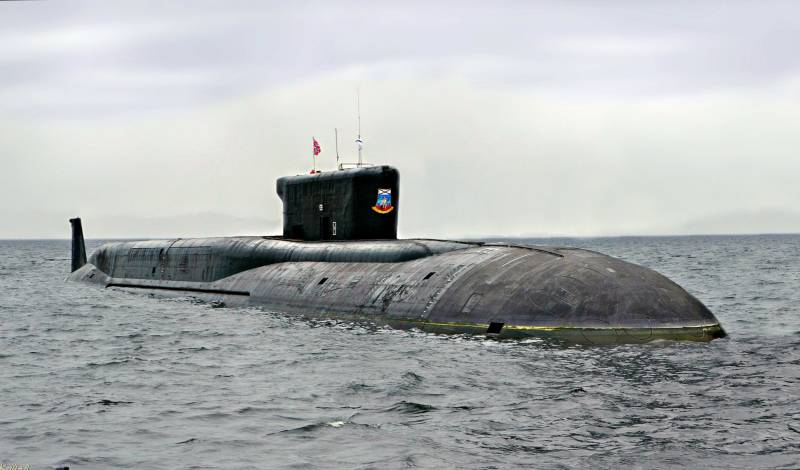
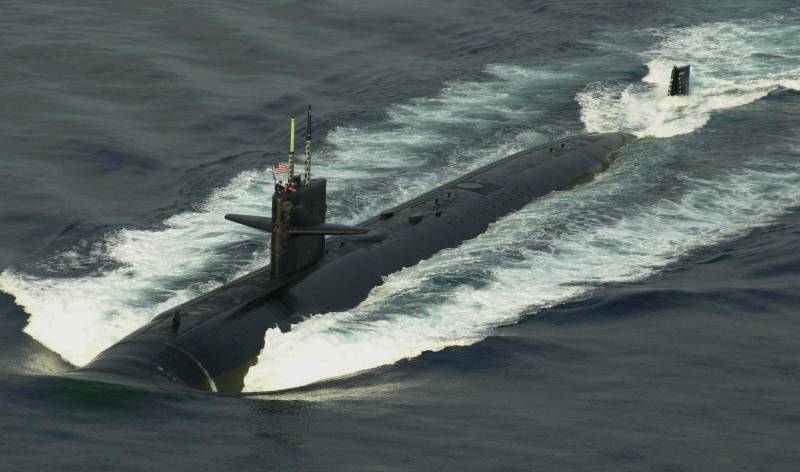
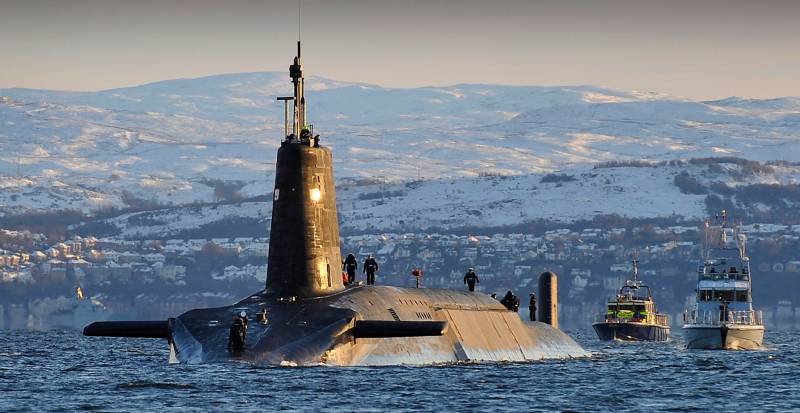
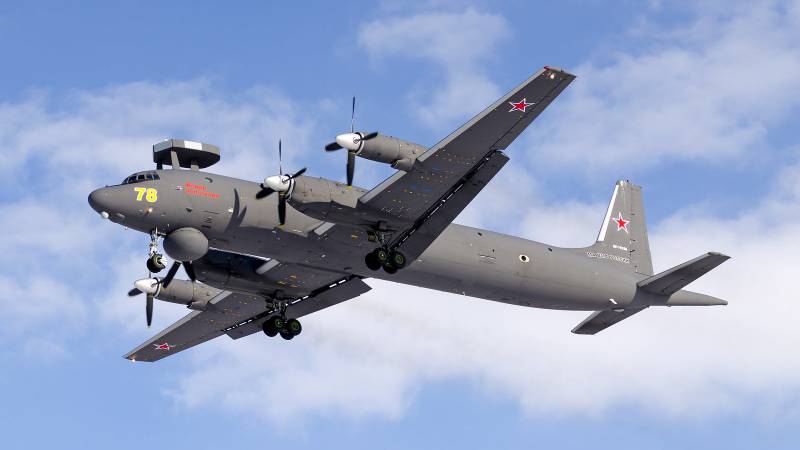
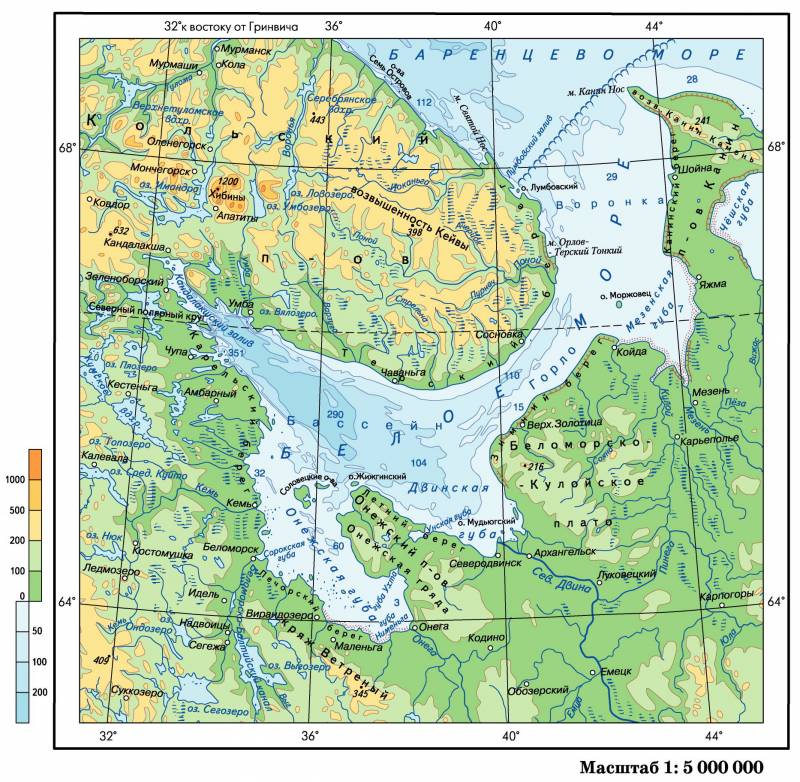

Information